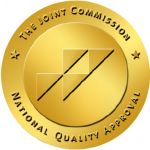Methadone maintenance effectively prevents opioid use withdrawal symptoms through the drug’s ability to block most of the opioid receptors in the human brain. Most opioid receptors bind to methadone, reducing withdrawal cravings for opioids, and minimizing any euphoria associated with additional opioid usage. Methadone maintenance blocks most of the opioid receptors that would otherwise trigger opioid cravings and spark euphoric effects. People addicted to opioids have no reason to use them while on methadone because the euphoric effects of opioid use are stopped by a phenomenon known as an “opioid blockade”. With consistent high doses of methadone, an opioid blockade works well in rehabilitation. Specifically, the National Institute on Drug Abuse (NIDA) recommends a methadone dose of 60-80 mg a day for optimal assistance in abstinence from opioid use.
High vs Low Dose of Methadone
While high doses of most drugs are dangerous, high doses of methadone are helpful. The NIDA recommendation is often overlooked due to the fear of prescribing a high dose of another drug to people already struggling with an addiction. Most individuals supervised under methadone maintenance are prescribed dosages well below 60 mg a day. The hesitation of health care professionals to prescribe high doses stems not only from fear but also from a lack of evidence. Empirical evidence for high-dose methadone maintenance recovery remains scarce and inconclusive because not enough studies have been done using the methadone dosage threshold recommended by the NIDA. It’s difficult to conduct studies on those recovering from opioid addiction because they are already going through a vulnerable time. The available data on methadone dosage differences have been short-term clinical trials with only 2 or 3 varying doses administered to randomly assigned patients in the study. The potential for the optimal dosage recommended by the NIDA has not been explored enough for it to be used widely by physicians and addiction specialists; only a few studies have used the recommended dosages.
Out of these studies, the highest dosage of methadone administered was 50 mg per day, still below the NIDA dosage recommendation. With this dosage, half of the participants in the study still had opiate-positive urine samples. The data within this report indicate that 50 mg could be considered a suboptimal dose since half of the patients still sought opioid use. Another large-scale survey of geographically diverse methadone programs showed heroin use to be lowest among patients on 60 or more mg/day of methadone. Because a holistic approach was not taken into account, the results of these studies are considered inconclusive. Therapy, treatment duration, and dosage compliance are important factors to be considered in opioid recovery. Because the studies did not consider these holistic factors, it is difficult to see the effects high doses of methadone have on opioid abstinence. Nonetheless, a two-year Australian observational study found a tie between high-dose methadone use and decreased heroin use. Another study published in the Archives of General Psychiatry supported the link:
“Higher doses of methadone are associated with lower rates of opioid use and improved treatment retention, as shown in randomized clinical trials 13-15 and in retrospective analyses of outcome in clinical populations.”
At Boardwalk Recovery Center we apply a holistic and specialized approach to our care. Our physicians are excellent at what they do and will ensure that our patients are getting proper doses of both medication and psychological support.
Life can be good again and we’d like to show you how.






